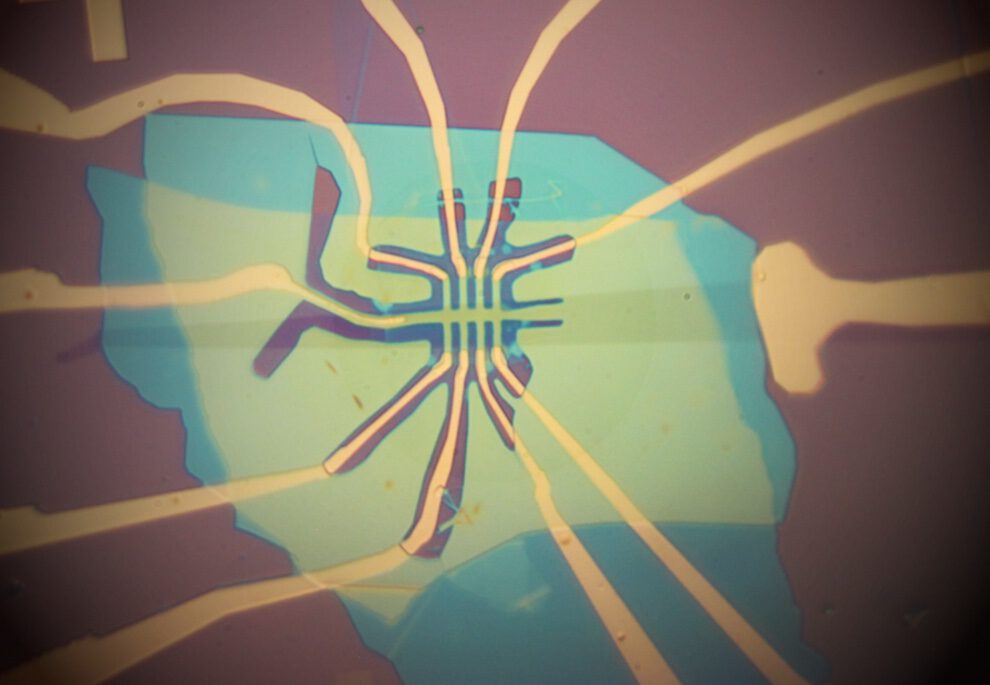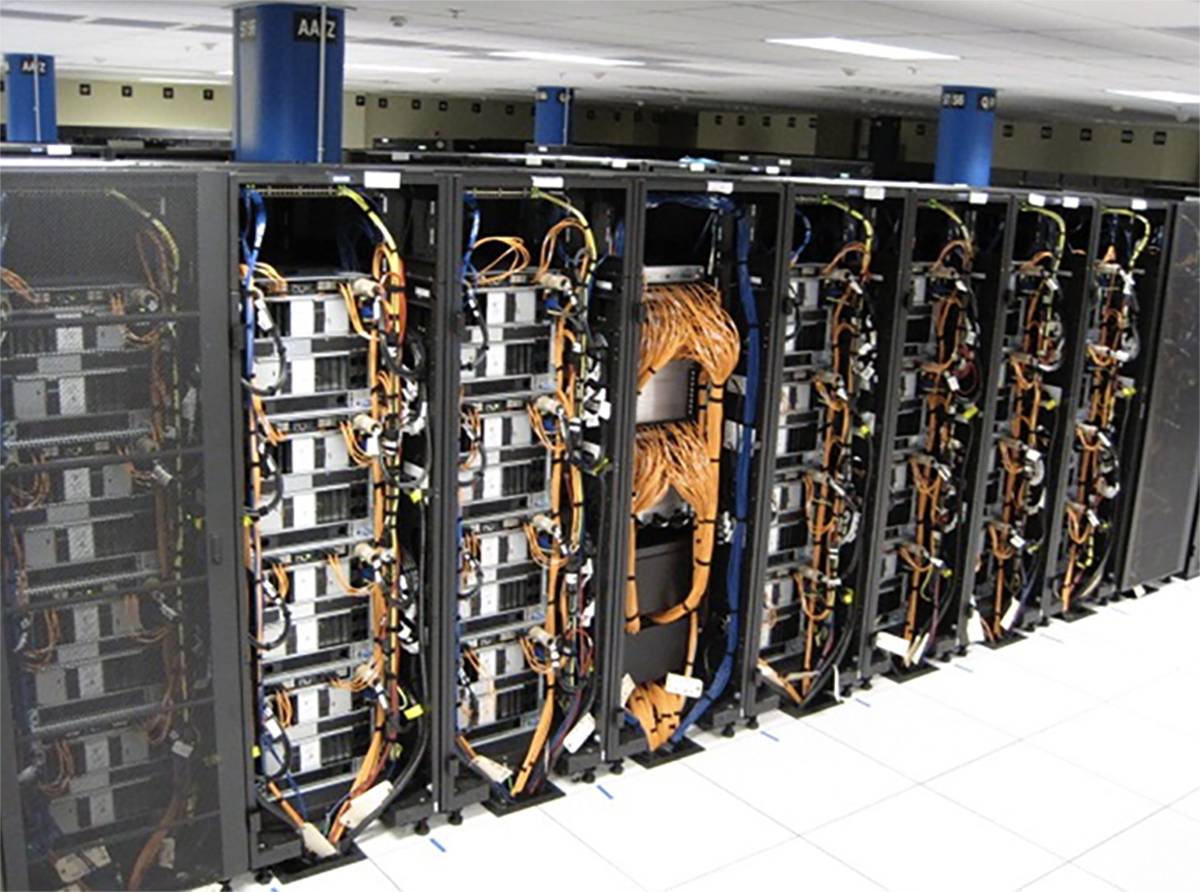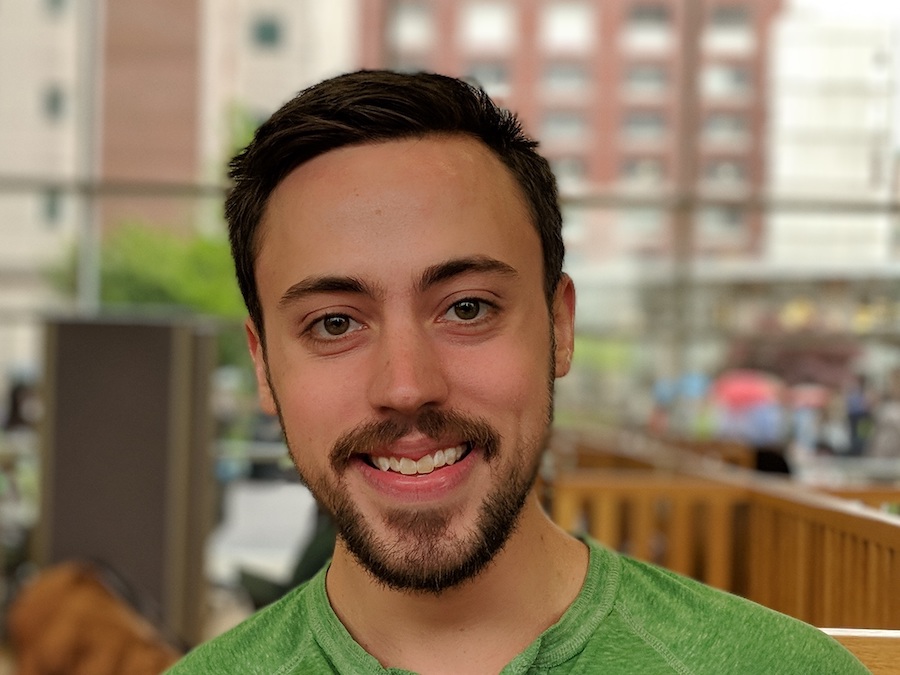All together now: Experiments with twisted 2D materials catch electrons behaving collectively
[vc_row][vc_column][vc_column_text css=".vc_custom_1602006386435{padding-top: 10px !important;padding-bottom: 5px !important;}"]By James Urton, UW News[/vc_column_text][vc_column_text css=".vc_custom_1602005322374{padding-top: 5px !important;padding-bottom: 5px !important;}"]October 6, 2020 [/vc_column_text][vc_column_text css=".vc_custom_1602005344894{padding-top: 5px !important;padding-bottom: 5px !important;}"]Scientists can have ambitious goals: curing disease, exploring distant worlds, clean-energy revolutions. In physics and materials research, some of these ambitious goals are to make ordinary-sounding objects with extraordinary properties: wires that can transport power without any energy loss, or quantum computers that can perform complex calculations that today’s computers cannot achieve. And the emerging workbenches for the experiments that gradually move us toward these goals are 2D materials — sheets of material that are a single layer of atoms thick.[/vc_column_text][vc_row_inner][vc_column_inner width="3/4"][vc_column_text css=".vc_custom_1602005353517{padding-top:...
Designing cutting-edge materials from home
[vc_row][vc_column][vc_column_text css=".vc_custom_1598373898336{padding-top: 20px !important;padding-bottom: 10px !important;}"]UW professors Ting Cao and Xiaosong Li bring computational science to the virtual classroom during COVID-19[/vc_column_text][vc_column_text css=".vc_custom_1598377715538{padding-top: 10px !important;padding-bottom: 10px !important;}"]August 25, 2020[/vc_column_text][vc_column_text css=".vc_custom_1598373907152{padding-top: 10px !important;padding-bottom: 10px !important;}"]When Governor Jay Inslee issued the Stay Home, Stay Healthy order to combat the spread of COVID-19 on March 23rd, University of Washington scientists and engineers faced a new challenge: how could they continue to experiment, innovate, and learn while most labs were closed?[/vc_column_text][vc_column_text css=".vc_custom_1598373915648{padding-top: 10px !important;padding-bottom: 10px !important;}"]For materials science & engineering (MSE) professor Ting Cao and chemistry professor Xiaosong Li, both Clean Energy Institute (CEI) member faculty, the shift to...
Matthew Yankowitz wins Army Research Office Young Investigator Award for layered 2D materials
[vc_row][vc_column][vc_column_text css=".vc_custom_1600448608935{padding-top: 10px !important;}"]July 9, 2020[/vc_column_text][vc_column_text css=".vc_custom_1600448636333{padding-top: 10px !important;}"]Originally published by the University of Washington Department of Materials Science & Engineering.[/vc_column_text][vc_column_text css=".vc_custom_1600450122381{padding-top: 10px !important;}"]Matthew Yankowitz, Washington Research Foundation Innovation Assistant Professor in Clean Energy and assistant professor of materials science & engineering and physics, has received the Young Investigator Program (YIP) Award from the Army Research Office, an element of the U.S. Army Combat Capabilities Development Command’s Army Research Laboratory. The objective of the YIP is to encourage and support young university faculty in research areas relevant to the Army. YIP awards are one of the most prestigious honors bestowed by the Army to...







